| Revista Umělec 2004/2 >> What it Means to Travel by Metro in Bratislava | Lista de todas las ediciones | ||||||||||||
|
|||||||||||||
What it Means to Travel by Metro in BratislavaRevista Umělec 2004/201.02.2004 Daniel Grúň | en cs |
|||||||||||||
|
Metro, Gallery Priestor for Contemporary Arts,
Bratislava, June 25 – August 1, 2004 Finally, in Bratislava, one can descend into the metro! Don’t be intimidated, we will travel using the virtual space of contemporary art. The newest project entitled Metro by the curator Juraj Čarný for the Priestor Gallery in Bratislava is literally program-tailored for the genius loci of this place. We enter the underground of the gallery, featured as an imaginary space station (Stanica SPACE). It is an allusion to the collapsing transportation system of Slovakia’s capital city, but also indirectly its present day cultural positioning. It seems that the sleeping Phoenix of the Slovak Neo-Dadism of the sixties rose from the ashes once again in the new form of the “aesthetics of impossible.” The curator’s created environment of the metro, realized by artists from several countries, works comprehensively with aspects of the space created from different features of civilization, artistic approaches and media. The Metro as Appropriated Reality Viewing the metro as a readable text, and the process of reading as motion on its underground network, my consciousness plunges into hitherto elusive fragments of snapshots and becomes part of a confined, pulsating space, just like that space station. It would not be logical to reconstruct it now for the reader, so I shall first move freely in the small show room. Simon Peterson’s The Great Bear approximates the structure of a subway map, substituting the names of stations and interchanges with the names of saints, philosophers, football players, actors, comedians, journalists, sinologists, and other professions. Peterson invites us on a virtual journey through the history of culture. He visualizes the experience of a modern-day person formed by the internet and new technology, where artists of different discourses and the personality of different stories can be easily interchanged. That well arranged map becomes an eerie labyrinth of the present day, unfolding before us. Dušan Zahoranský also employs a transportation map for his paintings. The station names are those of Bratislava – and the metamorphosis of its identity the change of political regimes. The video entitled Subway, by Martin Zet, offers the viewer a way to enter the subways of several world cities and compare life, atmosphere, and passengers. The viewer interactively picks from more possibilities and becomes a virtual participant and investigator. The video, entitled Players, by Marek Wasiliewsky, records the culture of life on the platforms personified by players and interpreters of different musical genres, sometimes lethargically, other times with repeating refrains and rhythms, in unconcealed passion. Ivor Diosi’s Metro reloaded documents the digital auras of visitors as they pass through underground corridors. It reminds us of a social space in which everybody’s movement is closely monitored, recorded and controlled. Richard Fajnor installed a small monitor by a narrow opening on which we can watch repeating motifs of civilized, cultivated and natural environments (a tunnel, a cave, an alley of trees). As the image moves, it appears to embody the constantly changing position and feelings of the viewer in different environments. For some reason, female artists were allotted a corner adjacent to a public toilet, whose walls function as a writing surface. A short video-loop by Anetta Mona Chişa shows a platform next to which a metro arrives accompanied by a recorded fragment of a discussion on the usefulness of art. The repeated answer to the question and the persistent arrival of a train pounds as a Zen hammer might — not unlike what everyone involved in our global project feels. Pavlína Fichta Čierna took up the subject liberally, presenting portraits of people preparing to make statements addressing a potential question: “what is difficult to talk about?” An interactive screen built into a terminal offers a variety of portraits to chose from, and shows the paradoxes inherent in responses to the given question. The television interview strategy of posing stupid questions assumes an existential aspect, especially in people who are going through some specific life experience. Activity in Public Spaces The individual artists employed a whole gamut of approaches and media, including static pictures and objects, video with its interactive potential, and direct interventions into the gallery space. The subject of public space through which thousands of people pass daily, integrated into the conception for Space Station (Stanice SPACE), by Stano Masár. The Detection (Odkrývanie) allows you to purchase a ticket in a dispenser and have it mechanically stamped. Masár’s post-readymades distinctly influence the atmosphere of the show, but in they wouldn’t work by themselves. On the other hand the open formation, Kunst-Fu, reacts to the “public” space of the gallery toilet with inscriptions and references; its existence “here and now” is only initiated only and consequently left to the other participants. The problem with this work is that in the given context this joint graffiti (drawn with colored markers on polished tiles and a toilet) feels too artificial, rather like an exhibition of the Slovak artistic elite. Next to it, in a comfortable waiting room or a place for meditation, the visitor can rest while watching 36 moles (36 krtkov, six episodes on six cassettes), a well-known animated series for children put in the context of Metro by Marek Kvetán. The animated mole happily digs in the earth and we travel happily with him in the underground! The installation by Milan Mikula literally objectifies a “hole in the system” with a hole drilled into the gallery wall. For some time it became a transport tube, from which you can hear the arriving metro, it is nearly here, behind the wall. Metro Istanbul by Antal Lakner opens the problem of Euro-Asian space, a paradox of present-day interconnectedness as well as division. In the multicultural present time incessantly reverberates the remnants of past powers and their hegemonies. Náměstí míru, a photograph in a lightbox by Krištof Kintera shows the artificial emptiness of “second nature” in human space. Apocalyptic Travels Erik Binder set up electronic information-boards in two rooms — objects with moving text and a clock dial that “measures” the awful speed of time – Interwall 1, and 2. XOUN sees you! Time is running out, you will die, you can’t escape! (Interwall 1. a 2. XOUN ta vidi! Cas sa krati, zomrete,neuniknete!), says the repeated text. Aggressively mixed slogans with outcries including “sex and war,” “private and public,” and “political and intimate” are displayed on the other board. The gate into the exhibition is a wall collage by Igor Przybylsky made from travel tickets: SEASON TICKET and ONEWAY TICKET. The collage doesn’t try to hide the fact that the tickets have been used, that they had been touched previously by a passenger’s hand. The photographs of Róbert Csere work with the paradox of the metro sign and the reality of Bratislava, which uses a combination of a red circle, from different semantic systems, in combination with a vertically inlaid band. Spraying on stencils, Tomáš Vaněk created a fictive camera system in inconspicuous places, which again refers to the fact that we are not only the observing, but also the observed ones. The Metro project includes visually significant and symbiotic works presented coherently. It is readable because it gives the viewer the opportunity to navigate through the references, to make his own impression on the space and to become involved with the simulacrum for a certain time. It is not just a depiction, but also a manipulative approach to the complexity of signs linked with the poetics of the underground. It is brought up by visual impulses of the picture and text, of the sound, characteristic cigarette stench (the object of Stano Masár), but as well by the possibility to enter and react with the exhibited works. The problematic of public art articulated by the curatorial conception is put in the reversed/upturned perspective: the “public space” is imported into the gallery. Its flaw is in the “thematization of mundane situations that artists elevate to an artistic reality (Juraj Čarný) in the case of use of promising realities. This principle of elevation that has been a tradition in Slovakia since the sixties (Alex Mlynárčik and Stano Filko), seems to be somewhat of a cliche and expired. The tension in the exhibition is created by the elements of irony about Bratislava, a city that has lacked a metro for ages. Indirectly, this irony articulates the provoking comparison of this city and its cultural identity with a big metropolis, in which the character of urban culture is contributed to by metro.
01.02.2004
Artículos recomendados
|
|||||||||||||
|
04.02.2020 10:17
Letošní 50. ročník Art Basel přilákal celkem 93 000 návštěvníků a sběratelů z 80 zemí světa. 290 prémiových galerií představilo umělecká díla od počátku 20. století až po současnost. Hlavní sektor přehlídky, tradičně v prvním patře výstavního prostoru, představil 232 předních galerií z celého světa nabízející umění nejvyšší kvality. Veletrh ukázal vzestupný trend prodeje prostřednictvím galerií jak soukromým sbírkám, tak i institucím. Kromě hlavního veletrhu stály za návštěvu i ty přidružené: Volta, Liste a Photo Basel, k tomu doprovodné programy a výstavy v místních institucích, které kvalitou daleko přesahují hranice města tj. Kunsthalle Basel, Kunstmuseum, Tinguely muzeum nebo Fondation Beyeler.
|







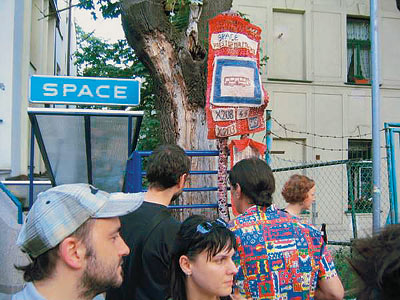





















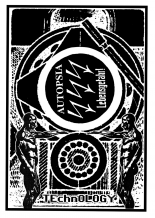
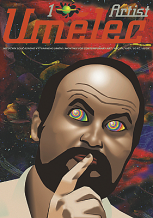
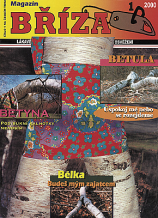
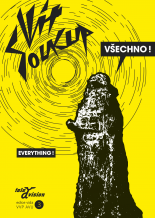


 New book by I.M.Jirous in English at our online bookshop.
New book by I.M.Jirous in English at our online bookshop.
Comentarios
Actualmente no hay comentariosAgregar nuevo comentario